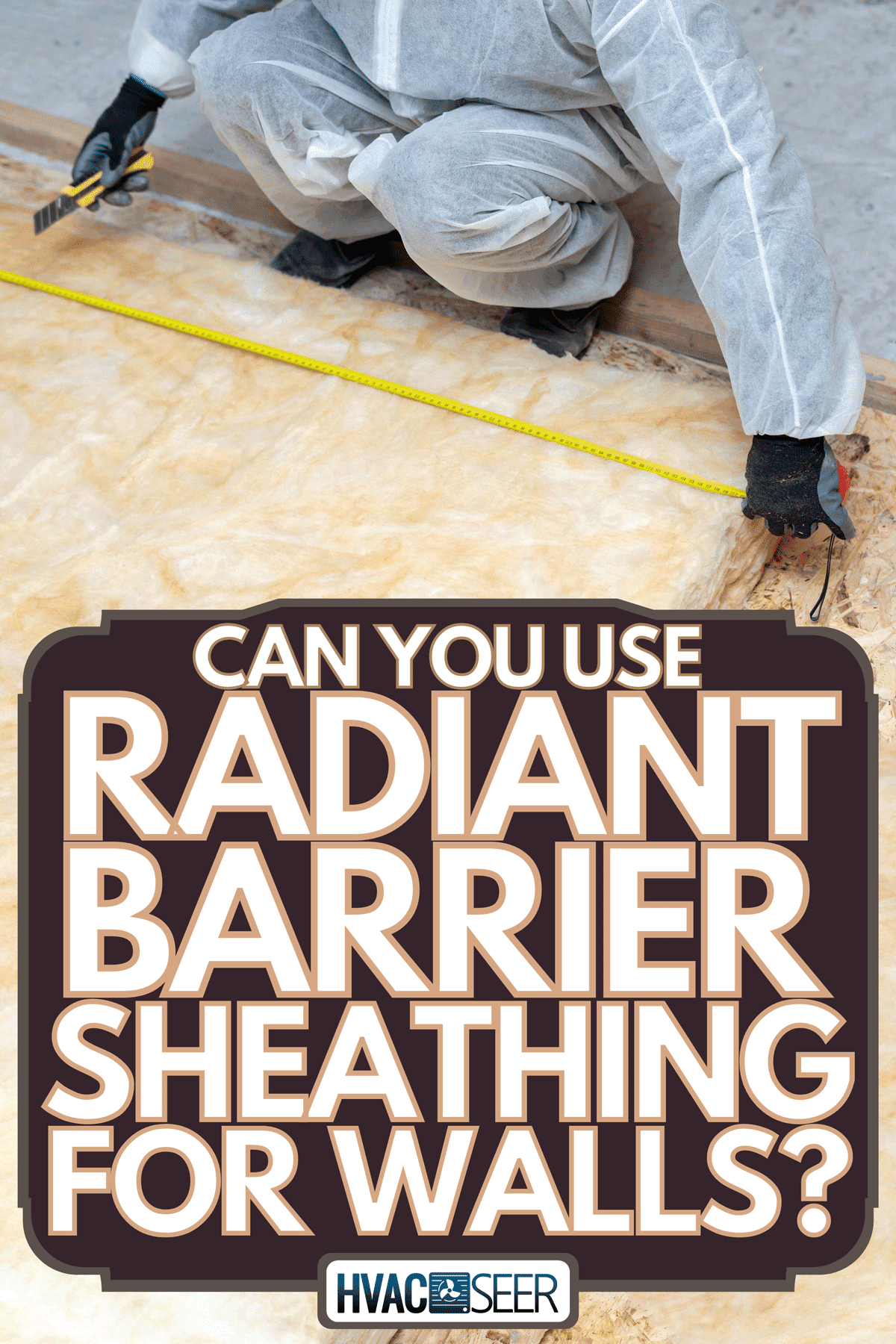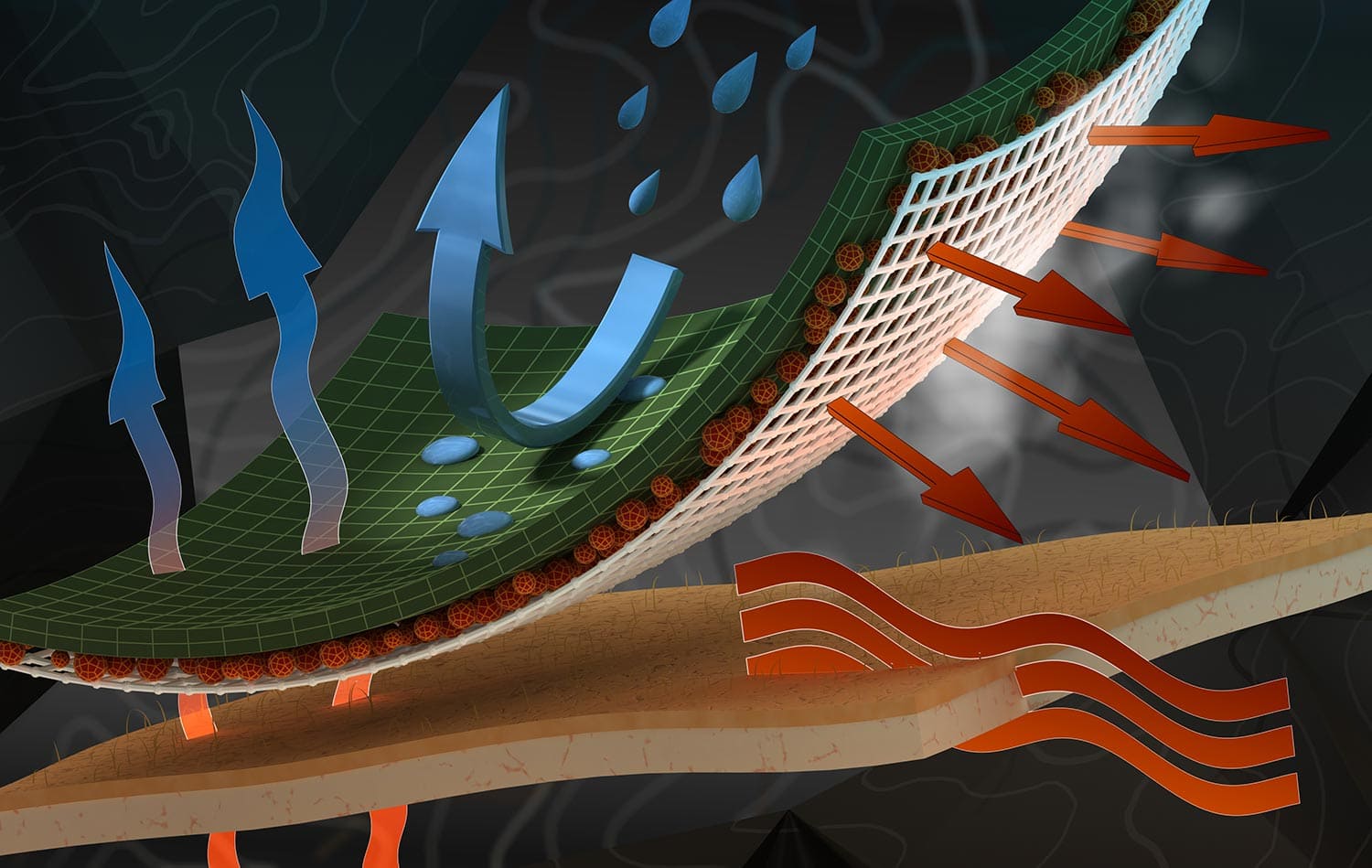It's nice to have a cool house to stay in. Radiant barrier sheathing will help you achieve this by reducing heat from the outside. These types of barriers are common in the attic. But can we use it on walls? We've researched how radiant barriers work and where they are best used, to find out!
You can certainly install a radiant barrier on your walls, given that there is a space of about 1-2 inches for air to circulate. The barrier can absorb the heat from the other side but reduce the heat being transferred into the room. As a result, the atmosphere is cooler.
The ability to reduce the temperature of your room is incredible, it can significantly affect your comfort level at home. A radiant barrier can help. Let's go over our research findings in greater detail.

The Purpose Of Radiant Barrier
A radiant barrier is a popular heat-reduction mechanism for attics where sunlight directly radiates the roof. Because most roofs are made of metallic compounds, a house with no radiant barrier will have hotter air inside. The heat transfer from above is reduced and directed back to the outside with a radiant barrier.
The sunlight also heats up the various rooms in the house. In addition, radiant barriers can also trap cold air from the inside and prevent it from escaping.
Radiant sheathing is usually made from foam that has been coated with reflective aluminum foil. It can be pinned to wood or glass depending on where you want it to go and how you want it to look. Radiant barrier can last up to a decade, if properly installed.

How To Install A Radiant Barrier Sheathing On Walls
The sheathing can simply be pinned to the wall. However, it is preferable if there is room for air circulation. This space will keep the heat trapped.
To install a radiant sheathing without an air space, follow these steps:
- Measure the surface area of the wall to know how much sheathing you need. Include the corners.
- The foil conducts electricity. So, avoid installing near the electrical wires.
- Pin the sheathing with a nail, stapler, or adhesive.
- Cut the edges, but it's easier if you cover the whole surface first.
- Since there's no air space between the wall and the sheathing, do not lay the sheathing completely flat on the surface. Allow at least an inch of protrusion on the center.
- Cover the wall as if the sheathing were a curtain.

The other option is to install it inside the wall to create an air space, which is usually done at the start of the construction. You might need professional assistance for this technique. However, you can try it yourself as some of these steps are easy to do. See these steps:
- Make a frame for the sheathing.
- Cover the frame with wood sheets of the same sizes. Leave an inch gap between the sheets.
- Attach the frame to the wall. Make sure you do not cover any electrical wires.
- Install the sheathing on the frame and cut the excess edges.
- You may cover the radiant barrier with another wall but leave a ventilation hollow on the top. Cover this hollow with a blind or metal screen. This hollow will function as an airway passageway.
What Direction Should A Radiant Barrier Face?
The foil side of the sheathing should be facing inward. This will reflect heat and keep it out. The heat will be trapped and converted into cooler airflow by its underlayment. There is, however, a barrier with aluminum foil on both sides. If you're still unsure about which way it should face, the image may help provide a visual of how the barrier works.

Is Radiant Barrier Sheathing Waterproof?
Liquid can be repelled by aluminum foil infused with radiant sheathing. This, however, does not make it completely waterproof. Liquid may be absorbed by the second layer of sheathing, which is typically foam.
This can make the sheathing heavy despite the fact that the sheathing can trap moisture and allow it to remain in the room for a few hours, causing it to cool.
Does Mold Grow On Radiant Sheathing?
Mold can form on the sheathing. The liquid accumulated by the cold temperature could mix with the dust to form the mold. Consider a dishwashing sponge, which can collect an excessive amount of bacteria even on the first day of use. Mold can grow from the foam on the sheathing, which acts like a sponge.
Consider these tips to prevent mold growth:
- Make sure no liquid can pass through the cracks and holes on the surface.
- If you've reached the desired temperature of your room, you can turn the ventilation into lower level to avoid overly moisturizing the sheathing.
- Practice regular cleaning of the room to avoid dust accumulating. Dust and liquid are the primary causes of mold growth.
Does Radiant Sheathing Shrink Or Compress?
There are some cases in which the foil may shrink due to heat. But since the sheathing is hidden behind the surface most of the time, it does not shrink or compress. The foam may automatically detach from the foil if there's exposure to extreme heat.
Are Radiant Barrier And Insulation The Same?
Insulation is designed to slow the loss or gain of heat. It works to maintain the temperature of your home at a constant level. While a radiant barrier actually blocks and reflects heat back to its source, rather than slowing down the process.
Installing insulation as well as a radiant barrier, on the other hand, will result in improved temperature control efficiency. If you have to choose between the two, the radiant barrier is likely to stand out. Radiant sheathing is more efficient, saves energy, and provides more consistent comfort. If your wall already has insulation, you could simply leave it alone as it's doing its job.
Can A Radiant Sheathing Be Painted?
A paint may affect the sheathing's ability to perform well. It can either improve or worsen the results. Some paints absorb heat, and some do not contribute to the sheathing at all.
But if you insist on painting, be sure to choose a water-based paint for reduced chemical absorption. The paint may settle on the sheathing foam and later make the foam hard and lose its purpose.
Radiant Barriers: Safe Or Not?
Homeowners are responsible for their own safety. Radiant barriers, while useful, may pose a risk if these go unnoticed. But don't be alarmed just yet. Radiant barriers are beneficial to our health in some ways. Let's look at some troubling aspects of radiant barriers.

Moisture Issues
Since radiant sheathing has a layer of light material, it can get wet if an excessive volume of liquid penetrates through the wall. Like anything else, the sheathings have limitations in trapping moisture.
An example is the winter season. Too cold temperatures can cause the aluminum foil to freeze and stop functioning. The foam can also be heavy and cause it to fall from the wall. However, this event is unusual. This is just an elaboration of what may happen if too much coldness invades the house.
Excessive Heat Issues
Additionally, too much heat absorption can also harm the house. Aluminum foil has a magnifying feature similar to glass and mirrors. The foil can resist fire, yet the foam layer has lower fire resistance. This means that a fire can spark when it gets too hot. The same case goes for electricity. Aluminum conducts electricity, as mentioned from the start.
Comfort & Efficiency
These threats may bother you. But don't step back from installing a radiant barrier. It can really give you substantial results. Like breathable air and a comfortable ambiance.
Radiant barriers save energy and minimize electricity consumption. In the hotter seasons, people want cooler air. This mechanism might improve the effectiveness of an air conditioner or humidifier.
Overall, radiant barriers are safe. We just have to be cautious and better seek professional assistance for more safety guides.
Perforated Vs. Non-Perforated Radiant Barrier
The term perforated refers to the presence of tiny holes that allow air to flow freely. However, one disadvantage of perforated sheathing is that the layer beneath the foil may be too weak as a result of the holes.
Click here to see perforated barrier on Amazon.
On the other hand, a non-perforated type is entirely solid. One disadvantage of non-perforated sheathing is that it requires more space for air to flow. With these details in hand, take some time to reconsider which type will best suit your needs.
Click here to see non-perforated barrier on Amazon.
How To Change A Radiant Sheathing?
Should you need to change the radiant sheathing, take a look at these steps:
- Unpin the sheathings from the wall or wherever you've installed them.
- Scrape the edges to remove the remaining adhesives used.
- Evaluate the condition of the surface if it needs repairing. If the frame is badly damaged, consider making a new frame for the sheathings.
- Install the new sheathings. Remember the safety precautions.
Radiating The Good Things
You can surely install radiant barrier sheathing for your wall to enhance the circulation of cooler air. You just have to consider factors like where the heat comes from, what type suits your need, and how it's done. Lastly, never forget the safety measures.
We love to share with you other articles you can learn from. Check these out!
Can You Use A Humidifier Without A Filter?
Should You Remove The Drain Plug From A Window Air Conditioner?


